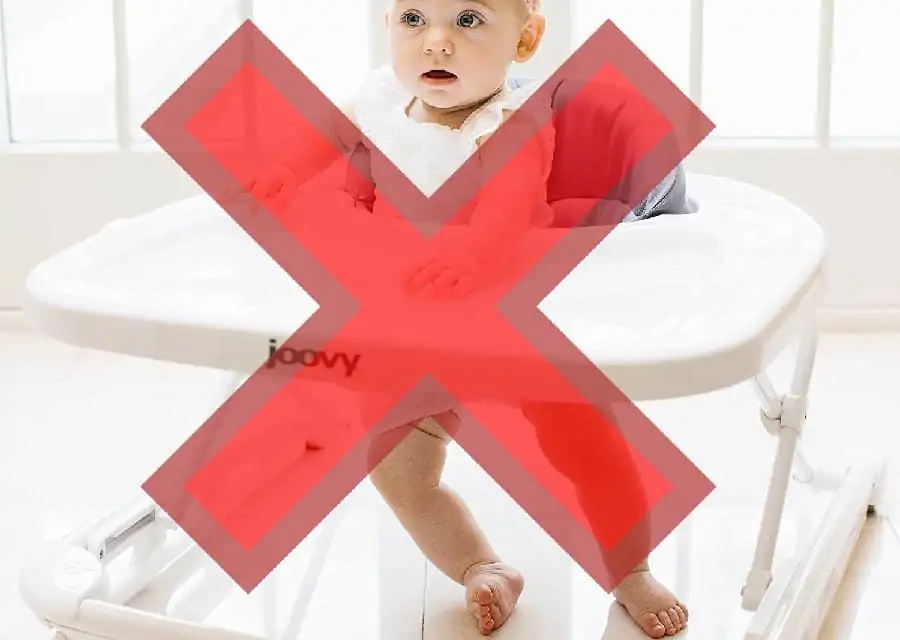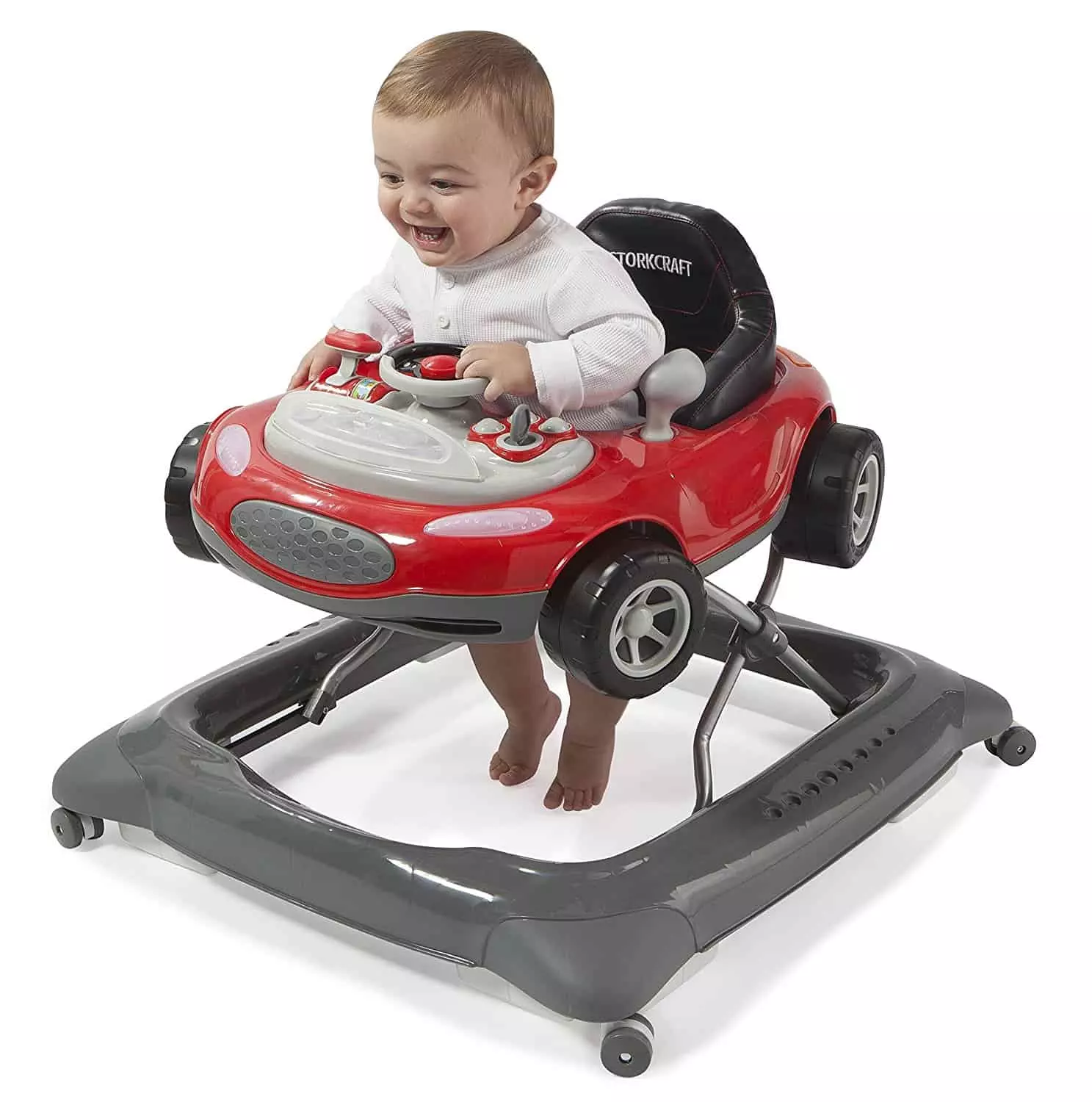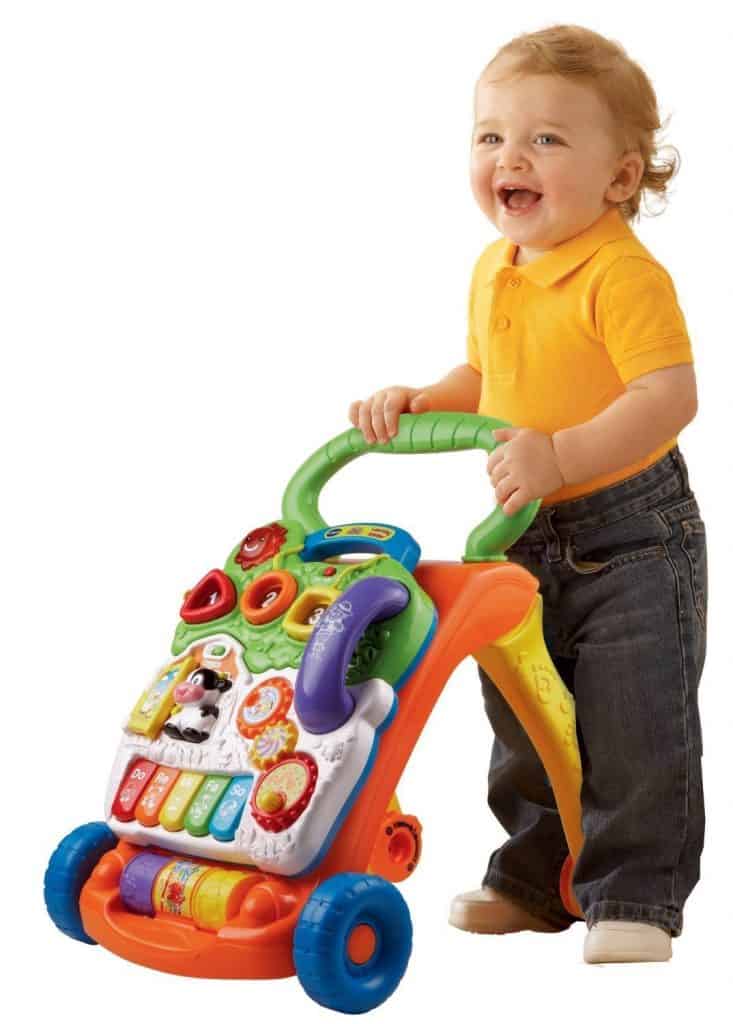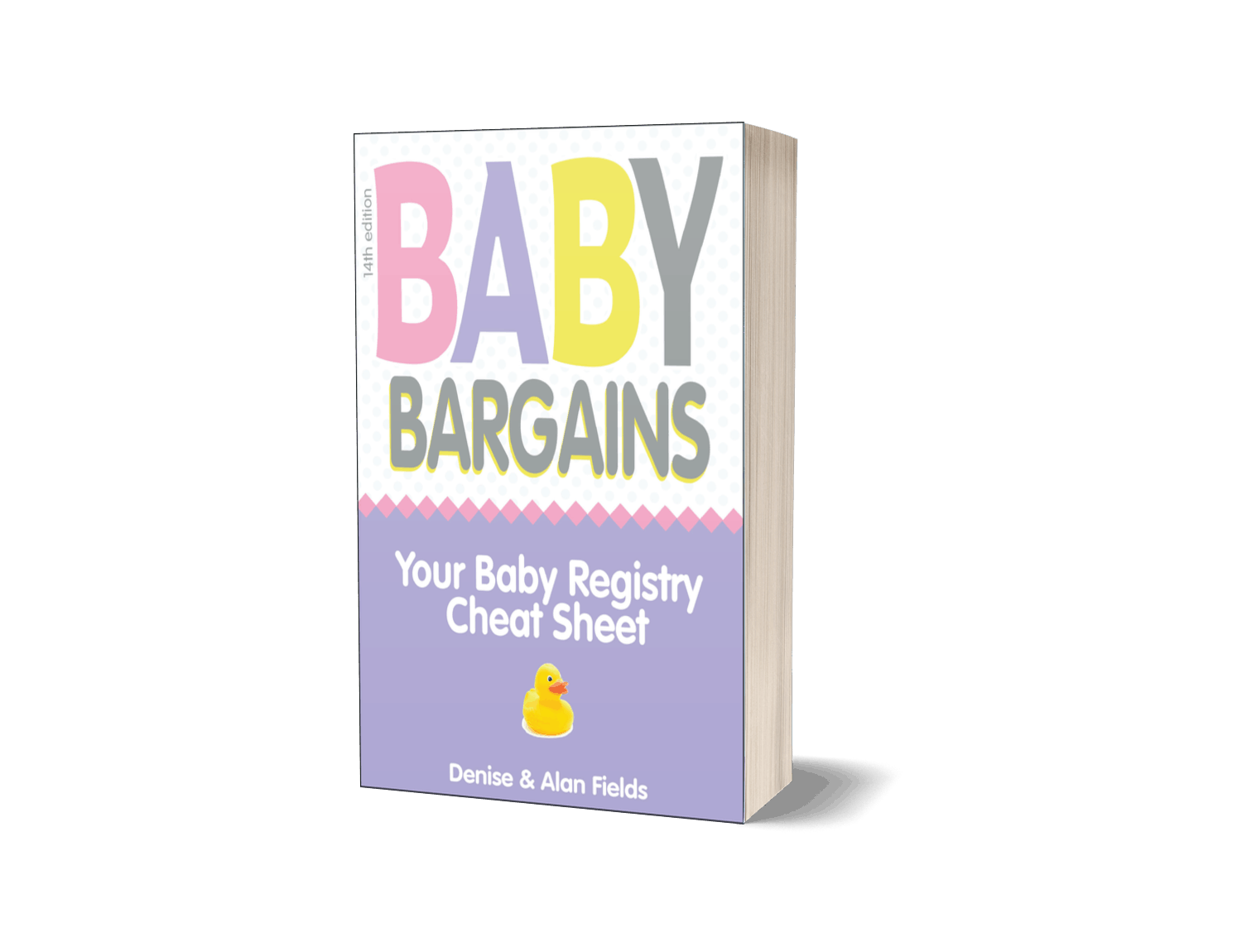Baby Walkers: NOT RECOMMENDED
Last Updated: . Baby Walkers: Not Recommended. Aren’t they cute? Is there anything more precious than seeing a baby like this?
Aren’t walkers helpful to babies just learning the ropes at walking? Actually—no. Baby walkers do NOT help babies learn to walk.
The only thing baby walkers do is increase the chance your baby will be hurt. According to a 2010 article in the New York Times:
Walkers allow mobility beyond a baby’s natural capability, and faster than a parent’s reaction time. Most of the injuries involve falls down stairs, but injuries can also come, for instance, from allowing (a baby to) reach . . . hot, heavy or poisonous objects. Today’s walkers are safer, but they are still hazardous – and of no benefit to the baby.
Ironically, baby walkers can actually DELAY a baby’s development when it comes to walking. “Sometime in the second half of the first year, healthy babies develop a strong urge to move across the floor. At first, this is a struggle for them as they work their arms and legs, stretching, rolling, scooting or crawling. They find delight in accomplishment as they achieve their goal of a toy out of reach. Later, the focus of their work will turn to pulling themselves upright.”
Pediatrician Dr. Alan Greene told the New York Times : “Babies who use a walker skip some of this magnificent developmental journey. With their toes in an unnatural position, they glide across the floor with ease, moving upright before their time.
What’s the outcome?
Besides the added dangers of moving faster, falling farther and reaching higher, babies who use walkers learn to crawl, stand and walk later than they would have otherwise, and continue to show delayed motor development for months after they have learned to walk. The delay seems to be a little more than three days for every 24 hours of total walker use.
But the biggest delays – and the biggest surprise to many parents – are delays in mental development and lower scores on mental developmental testing, still present 10 months after initial walker use.
New walkers now have some safety devices built in meant to keep them from falling down stairs. Because of the newer safety requirements, there has been a marked decline in the number of injuries caused by walkers. Yet in 2016, there were still 3200 injuries caused by walkers that required an emergency room visit, according to the Consumer Product Safety Commission.
The American Academy of Pediatrics strongly discourages the use of walkers. Canada banned walkers back in 2004. Here’s the key reason: walkers allow babies to get places that their knees or feet would never take them.
Even with the new safety standards, pediatricians see numerous head injuries every year as a result of walkers. Even if a child doesn’t fall down the stairs, she can still run into low tables and chairs and knock items off tables (like hot drinks and glass vases, for example). And older, used walkers without the new safety devices are definitely death traps.
FYI: Baby walkers come in several flavors. Besides the traditional sit-down walkers, there are also hybrid “sit-to-stand” models like this one from VTECH:
We don’t like these either—they can be driven into dangerous situations by toddlers, who may knock into tables or other items that could tumble down.
Instead of a baby walker, we suggest a stationary play center. One example we’d recommend: the Fisher-Price Rainforest Jumperoo ($67.99). All the fun of a walker, minus the trip to the emergency room.
Bottom line: do not buy or use a baby walker. They are dangerous! Baby Walkers: Not Recommended.




 We obsess over gear for families . . . so you don't have to. Baby Bargains has one mission: help you find the best gear for your family and home with unbiased reviews by experts with 20 years of experience. At prices that don't break the bank. When you purchase a product from links on this site, we make a small affiliate commission. Learn more
We obsess over gear for families . . . so you don't have to. Baby Bargains has one mission: help you find the best gear for your family and home with unbiased reviews by experts with 20 years of experience. At prices that don't break the bank. When you purchase a product from links on this site, we make a small affiliate commission. Learn more 
